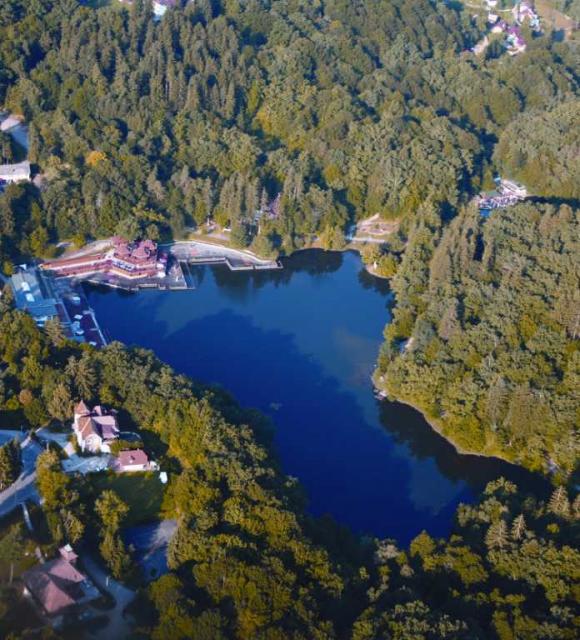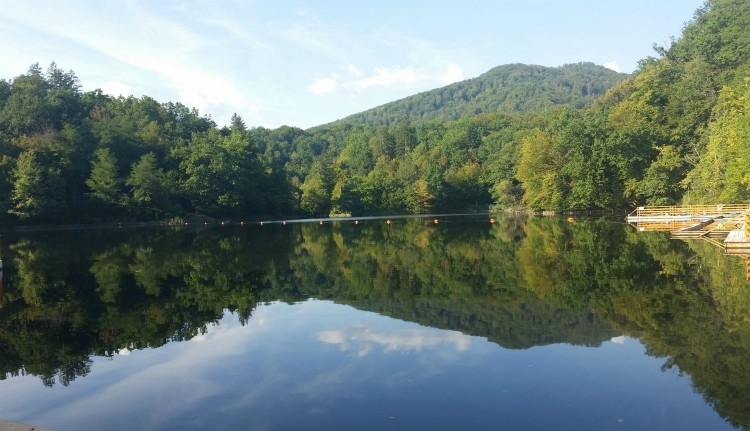The World Academy Record (the largest organization presenting and classifying world records) has acknowledged Bear Lake/Lacul Ursu from Szováta/Sovata as the world’s largest heliothermic lake. The lake, famed throughout the world for its healing powers, covers 4 hectares in the shape of an outstretched bearskin and is 18 meters deep. The layer close to the surface of the water of heliothermic lakes, due to the sunshine, warms up to high temperatures. The phenomenon is created only in the case of salt lakes if the creeks pouring in and the precipitation form a layer of freshwater on the surface, which does not mix because its density is lower than that of the salt water below it.

Bear Lake was formed in 1875, when a salt mine collapsed and was filled with water from rainfall and the streams that descend from the nearby versants. Its surface salinity is 100 g/l, which exponentially increases with depth. The water can reach a temperature of 35 degrees centigrade due to the heliothermic phenomenon: the fresh water of two small brooks that flow into Bear Lake form a 10–15 cm layer on top of the saltwater. This freshwater layer behaves just like a magnifying glass: the sun’s rays penetrate it, warming the underlying saltwater to a depth of 1.5–2 m up to 35 degrees. The freshwater layer also acts as a heat insulator, preventing saltwater with a much higher density rising to the surface and losing its accumulated heat in contact with cooler air.
The water of the lake has been used over the last century (and still is today) to cure diseases such as infertility, rheumatism, or different types of inflammations.
The tourist potential of the lake was first recognized by landowner Lajos Sófalvi Illyés, who officially founded the Felső-Szováta/Upper Sovata settlement in 1900. In the beginning, the lake carried the name of the resort’s founding father. In the tourist bath/spa guide of 1902 it was named Lake Illyés-Medve, and since 1910 its name has simply been Lake Medve/Bear Lake/Lacul Ursu.
To preserve the heliothermic effect, bathing is restricted every day for two hours, because the lake needs to rest, and the freshwater layers resume their roles: get back to the surface to keep the saltwater below warm. (The record measured water temperature is 80 degrees centigrade, which has decreased over the years because of the freshwater of the creeks pouring in and also because of bathing.)

On December 30, 2015, Szováta municipality finished the “Salt-road” project, within which trails and promenades were created around the Lake. The trails have boards with useful information, not only about Medve Lake, but also about other lakes and rest areas. There are four more salt lakes nearby: Mogyorósi/Nut Lake/, Rigó/Black Lake, Vörös/Red Lake and Zöld/Green Lake. In the inter-war period, Szovata became one of the most fashionable spas in the country and was visited several times even by the Romanian Royal Family.
Featured photo: Vasile Hurghis